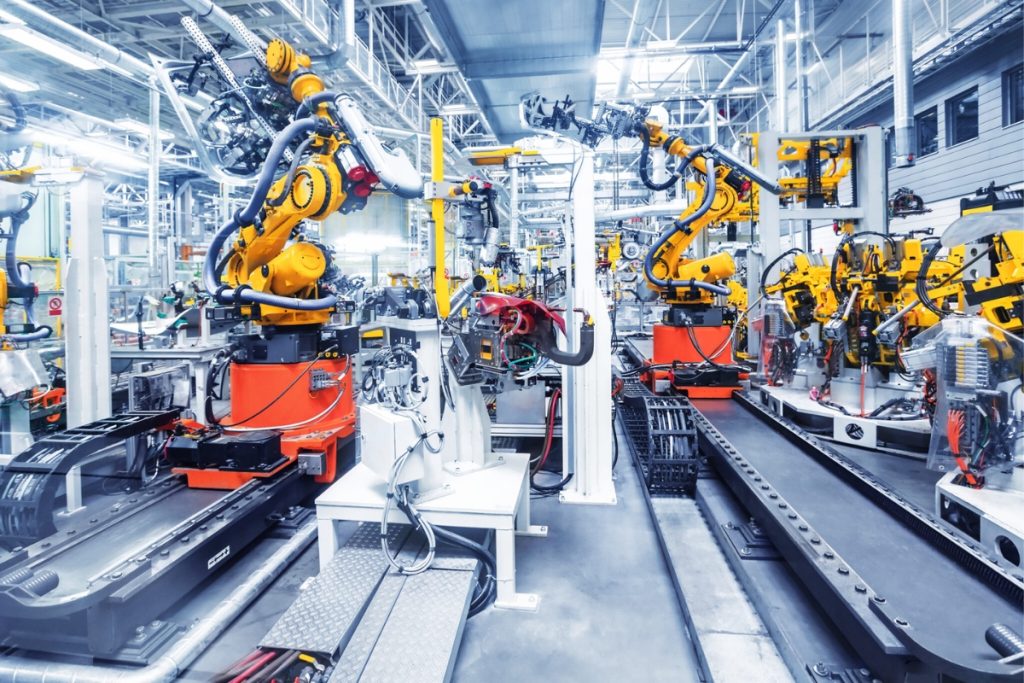This grant has expired.
This grant has expired and is no longer available. However, please contact Avant Group in case there are alternative grants available or to be informed if this grant will reopen.

NT Advanced Manufacturing Ecosystem Fund
- Applications are open until: 30 June 2026
- Matched funding of between $25,000 and $500,000
- Covering 50% of eligible project costs
The Advanced Manufacturing Ecosystem (AME) Fund's primary objective is to enhance advanced manufacturing capabilities, stimulate investment and productivity in the Northern Territory's advanced manufacturing sector, and bolster the number of advanced manufacturing jobs within the region.
This funding opportunity is specifically tailored to small and medium-sized manufacturing enterprises seeking to advance their capabilities in the Northern Territory (NT).
Eligible businesses can access funding support of up to 50 percent of their project costs, with grant amounts ranging from $25,000 to $500,000.
Key Requirements
The Fund’s objectives are:
- To nurture the growth of the advanced manufacturing ecosystem in the NT, concentrating on the region’s priority sectors.
- To enhance advanced manufacturing capabilities within the NT, encompassing priority sectors, and potentially introducing new companies.
- To stimulate increased investment and production in advanced manufacturing activities in the NT while concurrently boosting the number of advanced manufacturing jobs in the area.
The Fund will achieve these goals by awarding grants to industry-led advanced manufacturing projects situated in the NT within priority sectors. These projects should:
- Facilitate the commercialisation of new products and processes, including transitioning them from the pilot/prototype stage to full commercial operations.
- Provide support for early-stage, small-scale, and pilot research projects in advanced manufacturing.
These grants, starting from a minimum of $25,000, aim to assist smaller firms and early-stage research initiatives, expediting their progression to larger-scale commercialisation.
Grantees are expected to contribute a minimum of 50% of eligible project expenditures in cash.
What is eligible for funding?
To meet eligibility, your project may include capital investment (up to 50% of grant funding) and incorporate relevant skills-based training to modernise and transform your manufacturing processes.
Eligible activities include:
- Carbon Reduction and Low Emissions
- Development and manufacture of products and technologies that help avoid, mitigate, and sequester carbon.
- Development and manufacture of products and technologies that assist in lowering or reducing greenhouse gas (GHG) emissions generated by individuals, organisations, or countries.
- Construction
- Development and manufacture of construction materials.
- Development and manufacture of new construction technologies and components.
- Development and manufacture of products capable of using new construction technologies.
- Critical Minerals
- Manufacturing of new critical mineral products in Australia, such as lithium, cobalt, manganese, tantalum, tungsten, zirconium, and rare earth elements, and the manufacture of products using these refined materials.
- Development and manufacture of precursor materials for battery components.
- Development and manufacture of battery-powered mining equipment.
- Recovery and remanufacture of critical mineral products.
- Defence and Security
- Development and manufacture of products providing sovereign capability for Australia’s national defence and security requirements.
- Digital
- Integration of computer systems into manufacturing products and processes along the supply chain.
- Development of digital technologies that improve manufacturing processes and supply chain efficiencies.
- Development and manufacture of products that can be used in computer systems.
- Development of AI technologies.
- Energy
- Development and manufacture of energy products (including renewable energy products).
- Development and manufacture of new energy technologies and components.
- Development of energy services (including clean energy services).
- Development and manufacture of products capable of using new energy technologies.
- Fabrication
- Development of new processes and technologies for building and assembling products.
- Development and manufacture of new fabricated products.
- Development and manufacture of equipment and technology that can use these technologies and products.
- Food and Agriculture
- Development and manufacture of innovative products used to process agricultural produce, from basic preparation to elaborately transformed food or beverages, across the food and beverage manufacturing value chain.
- Development and manufacture of innovative products that enhance the competitiveness of the local food and beverage industry.
- Development and manufacture of agricultural equipment used in food farming.
- Development and manufacture of new fibre products for clothing or other purposes.
- Development and manufacture of equipment and technology to carry out processes required for manufacturing new fibre products.
- Maritime
- Development of infrastructure for the local maritime industry.
- Development and manufacture of components required for the maritime industry (including communications equipment and sensors or consumables).
- Development and manufacture of products or services that improve maritime industry sector technology, competitiveness, and sustainability.
- Development of technologies to assist automation in the maritime industry.
- Material Recovery/Recycling
- Using advanced manufacturing processes for the recycling of waste plastic, paper, glass, food, water, and tyres, among others.
- Development and manufacture of innovative machinery used for material recovery, material reprocessing, and material remanufacture.
- Development of services that enhance recycling opportunities.
- Medical and Pharmaceuticals
- Manufacture of medical or pharmaceutical devices.
- Development of medical or pharmaceutical services.
- Pharmaceuticals, medical technologies, and medical biotechnology.
- Petrochemicals
- Refining of natural gas and the development and manufacture of products using the refined outputs.
- Development and manufacture of equipment and technology to carry out these processes.
- Resources technology
- Development and manufacture of products or services that improve resources sector technology, competitiveness, and sustainability.
- Development and manufacture of resources industry products or services suitable for export.
- Development of technologies to assist automation in the resources sector, including autonomous mining, remote operations, and the use of digital technologies to provide greater safety and efficiency in the extraction and processing of resources.
- Space
- Development and manufacture of products providing sovereign capability for the local space industry.
- Development of infrastructure for the local space industry.
- Development and manufacture of items that are launched into space (rockets, etc.).
- Development and manufacture of associated components (including communications equipment and sensors), as well as products such as solid fuel or other consumables.
- Development and manufacture of associated products and infrastructure, such as launch facilities or mission control/relay subsystems.
- Development and manufacture of products or services that improve energy efficiency.
To be eligible, expenditure must:
- Be incurred by your organisation within the project period.
- Represent a direct cost of the project.
- Be incurred by your organisation to undertake required project audit activities.
- Comply with the eligible expenditure guidelines.
What companies are eligible for funding?
To meet eligibility criteria, applicants must:
- Possess an Australian Company Number (ACN).
- Hold an Australian Business Number (ABN).
- Be non-tax-exempt.
- Be registered for the Goods and Services Tax (GST).
- Operate as an entity incorporated in Australia, which includes start-ups and trading corporations, with the primary project activities taking place in the Northern Territory.
Additional eligibility requirements include:
- Acceptance of applications exclusively from small and medium-sized Australian manufacturing enterprises (SMEs) with up to 199 employees (headcount). However, larger organisations may apply, subject to consideration of their impact on the Northern Territory manufacturing ecosystem.
- Demonstrate a minimum eligible project expenditure of $50,000, with $25,000 in co-funding provided by the lead participant.
- Clearly identify the expected job creation in the Northern Territory resulting from the project.
- Align the project with one or more of the NT Manufacturing Priorities.
- Provide evidence of the ability to complete the project and cover costs not covered by grant funding.
- Demonstrate financial capacity by using the accountant declaration template, confirming the ability to fund the share of project costs, including any ineligible expenditure.
- Submit applications through an AMGC member. AMGC membership is open to all industry partners and is free. Interested parties can apply for AMGC membership.
- Involve at least two project collaborators, with at least one collaborator based in the NT and others from across Australia. Collaborators can include suppliers, potential customers, research institutions, and more.
Is this grant competitive or entitlement based?
Competitive. Your application will be assessed among other applications by a judging panel.
How can I increase my chances of winning this grant?
By engaging an accredited government grants consultant, such as Avant Group.
Competitive grants often require significant business case development and project analysis to support the application, this may include detailed presentations supporting the project’s merit, projected sales, cost-benefit analysis and more.
As part of your engagement with Avant Group, your account manager will assess the required documents and will provide the following as needed to support your grant submission.
Grant application writeup including a detailed presentation illustrating how the grant funding will contribute to your project, how the funding will contribute to the project’s budget, a project milestone plan, delivery timeline, impact on employment if applicable, and a breakdown of the management and leadership team for the project
- Industry analysis presentation
- Competitor Analysis Presentation
- Marketing and Sales Analysis Presentation
- 3-5 year Cashflow Forecast
- 3-5 year Balance Sheet Forecast
- Cost-Benefit Analysis of Grant Funding
- End-to-end grant application including information collating, analysis and application writing
- CAPEX (Capital Expenditure) cost-benefit analysis
- Stakeholder relations and Risk Mitigation Plans
- Any other relevant forecasting that will support your application
How can I get help with my application? Or know if I’m likely to win funding?
Avant Group offers a no-obligation assessment of your eligibility for funding and will assess your likelihood of a successful grant application.
